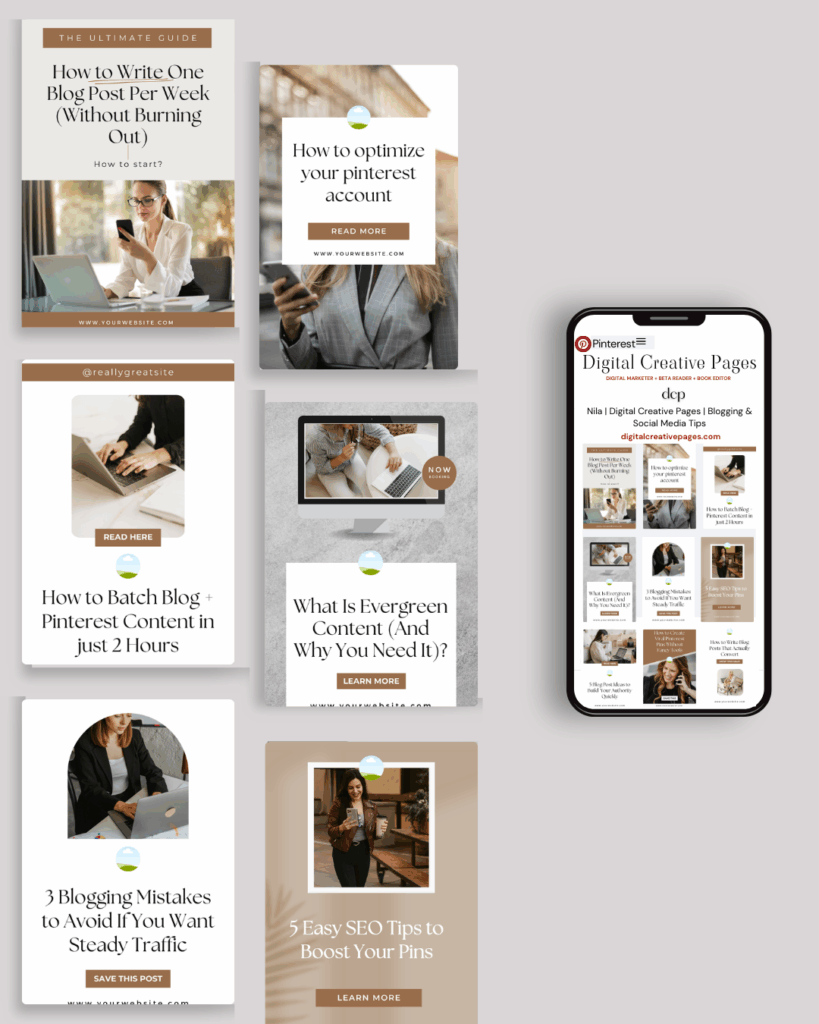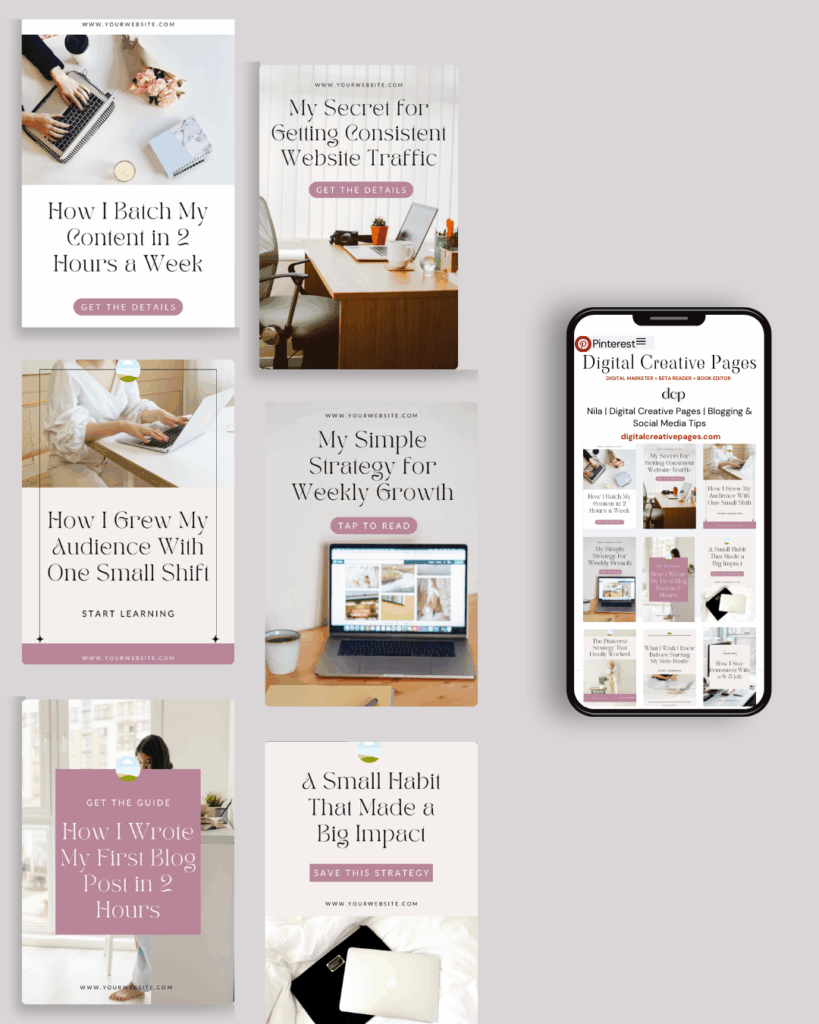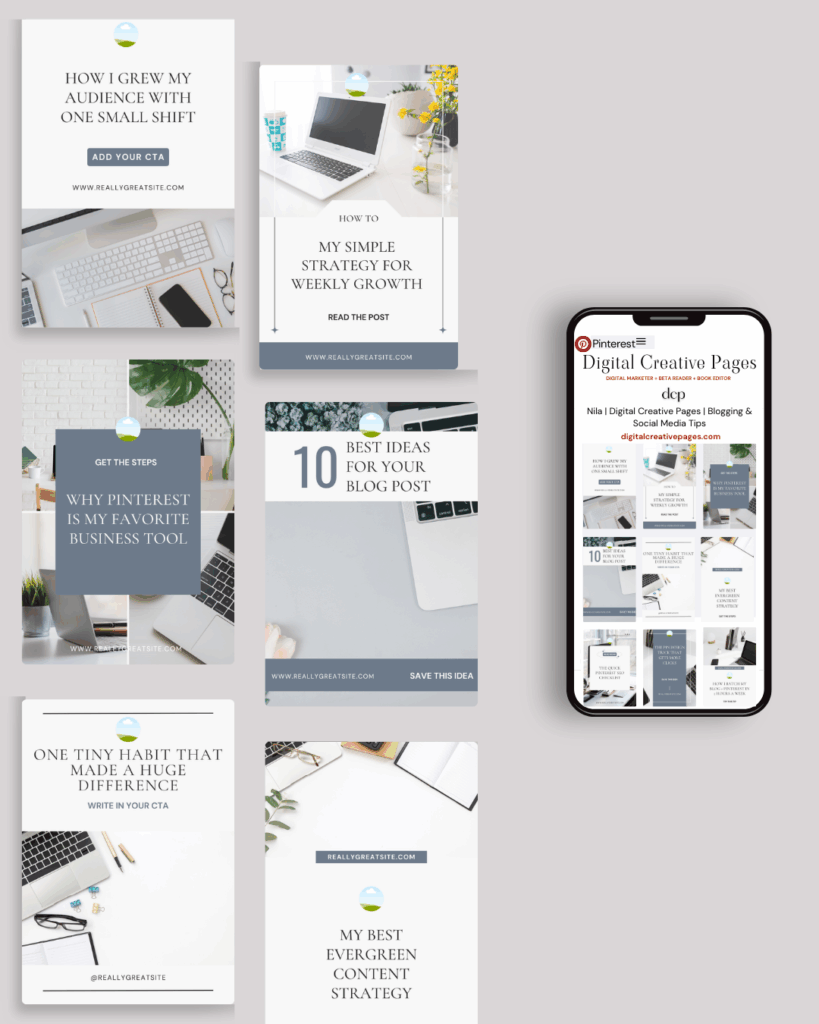Browse around
topics
Hey Girl!
business mentor + beta reader + book editor
I'm Nila
I'm a beta reader, editor, and behind-the-scenes support for authors and entrepreneurs.
I help women turn their skills into income by building sustainable online businesses with digital products and smart content strategy—so they can work from anywhere, on their terms.
Customize Your Showit Template To Get Results
showit
15 Small Business Ideas To make You Rich
Entrepreneurship
Pro Beta-Reading Services For Your Manuscript
Books
Pinterest – Perfect Virtual Assistant For Your Blog
social media
Author Templates
Make showing up online easier with this ready-to-use set of author templates. Whether you’re announcing a cover reveal, celebrating your first reviews, or simply wanting to connect with readers, these designs save you time while still looking polished.
Canva template
My bestsellers
Pinterest Playbook
Imagine driving massive traffic to your website every day with Pinterest!
A comprehensive roadmap to mastering Pinterest marketing and growing your online presence effortlessly!
How To Start A Successful Blog to Make Money
blogging
Mindfulness Practices To Decrease Anxiety
mindfulness
Stock pics
Styled Stock Society
Stock photos and brand visuals for women entrepreneurs who are ready to stand out.
Styled Stock Society — with its on-brand and one-of-a-kind stock photos, graphic templates, marketing materials, and more — is designed to elevate your brand in less time.
#affiliatelink
Pinterest Affiliate Marketing – That Will Turn Pins Into Money Now
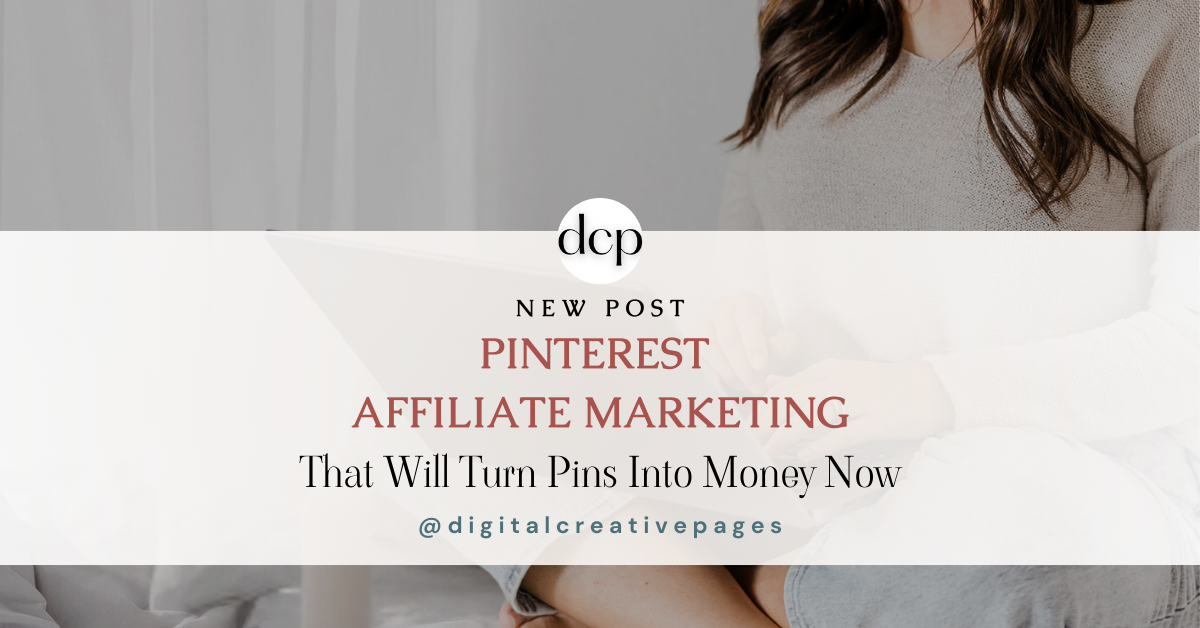
Posted In
November 16, 2024
Posted On
Introduction
Hey guys! Ever scrolled through Pinterest, saving gorgeous home decor ideas or mouthwatering recipes, and thought, “Could I make money doing this?” Spoiler alert: You absolutely can! Welcome to the world of Pinterest affiliate marketing, where your pin-worthy content can actually make you money.
Pinterest Affiliate Marketing is how you will earn passive income as an affiliate marketer on the platform. Pinterest is now a search engine where users not only go to discover ideas but also to shop. This gives you a highly engaged audience that is actively seeking products and solutions.
Pin this for later

What Makes Pinterest a Gold Mine for Affiliate Marketer?
Think about this: Pinterest isn’t just another social media platform – it’s a visual search engine where 522 million monthly active users come ready to discover (and buy!) new products. The best part? Unlike Instagram stories or TikTok videos that vanish into the digital void, your Pinterest pins keep working for you months or even years after you post them. Talk about passive income goals!
Want easy, practical content tips to grow your business? Join my weekly email list for Canva tricks, new social media updates, and simple strategies that actually work.
What Is Pinterest Affiliate Marketing?
On Pinterest content is posted as “pins” that contain images or videos, overlying text, pin description, and links to your website. Users browse and save pins they like to your boards. That helps your pins get more visibility.
Think of Pinterest affiliate marketing as your being a digital matchmaker. You connect Pinterest users with products they’ll love, and when they make a purchase through your special affiliate link, you earn a commission. It’s like getting a thank-you bonus for making great recommendations!
A win-win situation. This allows you to combine your creativity for sharing social content with the potential to make money. Nowadays leveraging social media platforms for affiliate marketing has become essential, and amongst these, Pinterest stands out as a virtual goldmine for driving traffic and conversions through visually appealing content.
Why Pinterest Users Are The Perfect Audience
Here’s what makes Pinterest users special:
- 75% of Pinners are actively shopping while browsing
- A whopping 83% have made purchases based on pins they’ve discovered
- The platform attracts everyone from Gen Z to high-income households
- Users are actively searching for solutions and products (hello, buyer intent!). They are ready to make purchasing decisions and are actively planning future purchases.
- Visual Discovery makes it easy for users who are seeking products and solutions.
- Search Engine Benefits as pins get indexed by Google, leading to double visibility (Pinterest + search engines) with an added long-term traffic potential and keyword optimization opportunities
- Community Engagement with active sharing and saving of your pins. Comments and discussions build trust and there is viral potential through re-pins and natural word-of-mouth marketing
The Power Of Pinterest Demographics
Understanding who you’re reaching is crucial for success. Pinterest’s user base is impressively diverse:
- Core age group: 18-49 years old
- Gender split: 77% female (though male users are growing!)
- High concentration of Gen Z users
- Significant portion of high-income households
- Global reach across multiple markets
- Users with strong purchasing power and intent
The Numbers That Make Pinterest Affiliate Marketing Exciting
Let’s talk real potential with some concrete examples:
Shopping Behavior
- 75% of Pinterest users are actively shopping while browsing
- 83% have made purchases based on pins they’ve discovered
- 80% of weekly pinners use the platform with shopping intent
Traffic Potential
Take the example of “patio ideas” as what AHREFS says (taken from their survey)
- 39,000 monthly searches
- 7,000 users specifically coming to Pinterest
- Your pins could reach these highly-interested buyers
- Content stays visible and searchable long-term
Earning Example
Let’s break down a realistic scenario:
- Promoting a $35 product
- 3% commission rate = $1.05 per sale
- Create 200 pins with various products
- Even at just 50 cents average per pin per day
- Potential daily earnings: $100
- Multiply this over months and years
2 Ways To Start Your Pinterest Affiliate Marketing Journey
The Quick-Start Method: Direct Affiliate Linking
This method is perfect for beginners and those looking to start earning quickly:
- No website needed
- Perfect for beginners
- Start earning faster
- Simply add affiliate links directly to your pins. Pinterest is fine with this as per their rules but make sure to be transparent about your intentions
- Perfect for testing different products
- Minimal technical skills needed
- Lower upfront effort and investment
Pros
- Minimal effort and cost to start 💸
- More direct traffic to your offers 📈
- Perfect for beginners in affiliate marketing 🏊♀️
- Quick to implement and test
Cons:
- Users may be less trusting of direct links
- Generally lower conversion rates
- Reliance on Pinterest as your only traffic source
The Long-Game Strategy: Blog-Based Affiliate Marketing
This method builds a more sustainable, long-term business:
- Create valuable content on your blog
- Use Pinterest to drive traffic
- Build trust with your audience
- Higher conversion potential
- Multiple traffic sources
- Greater content control
Pros:
- Builds credibility with detailed content and increases trust with your audience
- Higher conversion rates through trust-building
- Preferred by professional affiliates
- Multiple monetization opportunities
- More sustainable long-term
- Use Pinterest to drive traffic to your affiliate blog posts
Cons
- Requires more initial setup and work 🛠
- Slower to see initial results 🐢
- Need to maintain both blog and Pinterest presence
The Real Talk – What Can You Actually Earn
Let’s break down the numbers with a real example: Imagine you’re promoting a $35 product with a 3% commission. Each sale nets you about $1.05. Sounds small? Here’s where it gets interesting:
- Create hundreds of pins promoting various products
- Mix in higher-priced items for better commissions
- Even at just 50 cents average per pin per day
- With 200 active pins = potential $100 daily passive income
The Pinterest Advantage – Why Use Pinterest For Affiliate Marketing?
1. Long shelf-life
Content has an incredibly long shelf life. Pins can drive traffic for years! Unlike the other social media platforms, where content lasts only for 48 hours.
2. Blend in with the other pins
You can seamlessly mix affiliate links with other pins so your marketing efforts will not appear salesy
3. Visually appealing platform
Pinterest is perfect for showcasing product images or infographics related to your affiliate marketing. The more you make your pins pop, the better chances your links have of being clicked.
4. Target a receptive audience
Your audience is looking for product recommendations, so in reality, they have already been primed before they get onto this platform and start engaging with your content and offers.
5. Capitalize on their commercial intent
This means your target audience is planning for future purchases which means your affiliate products have a high chance to get onto their lists.
6. Affordable Marketing
Pinterest affiliate marketing requires minimal investment to begin with making this a great platform to start your marketing journey, whether you are a student or a stay-at-home mom or retired or if you are someone who is looking for a second income.
The beauty of Pinterest affiliate marketing is that anyone can start – whether you’re a complete beginner or a seasoned marketer. The platform’s visual nature, combined with its search engine capabilities, makes it perfect for showcasing affiliate products naturally and attractively.
Getting Started – The Basic Framework
To begin your Pinterest affiliate marketing journey, you’ll need to:
Set Up Your Foundation
1. Create a Pinterest Business Account
- Convert your personal account or start fresh with a business account (it’s free!)
- Business accounts give you access to rich analytics and audience insights
- Gain access to extensive analytics about your audience demographics and pin performance
- Enable the Pinterest tag for better conversion tracking
- Get your website verified to get access to Pinterest Analytics, audience insights, and promotional tools
- Enable rich pins so direct information is provided from your website on your pins
2. Optimize your profile for your niche
- Choose a professional profile picture that represents your brand
- Write a keyword-rich bio that clearly states what you offer (e.g. Helping home decorators find affordable luxury furniture)
- Include your website URL (if you have one)
- Select a username that’s professional and easy to remember
- Set up relevant boards for the affiliate products as per your niche and interest
- Create board names that incorporate popular search terms in your niche as shown in my blog post to improve your visibility on Pinterest
- Link to Affiliate Disclosures should be done in your profile and in your individual pin descriptions to comply with FTC guidelines. Use hashtags #ads #sponsored
- Always use direct, transparent affiliate links – never shorten them or cloak them or use multiple accounts to manipulate metrics
- Do not neglect FTC disclosure
3. Plan Your Content Strategy
- Identify 5-10 core content pillars relevant to your niche
- Create a content calendar for consistent pinning
- Plan seasonal content 3-6 months in advance
- Determine your optimal posting frequency (10-25 pins per day is recommended)
- Balance promotional pins with valuable, non-promotional content (80/20 rule)
- Map out your core categories and board structure
4. Research Your Target Audience
- Use Pinterest Analytics to understand your audience demographics
- Study your competitors’ most successful pins
- Join relevant group boards in your niche
- Create audience personas based on Pinterest user data
- Monitor trending topics in your niche using Pinterest Trends
Join Affiliate Programs
Choose Programs Aligned With Your Interests
- Start with products you personally use and love
- Look for brands that fit your audience’s price point
- Consider programs with recurring commissions
- Check if brands have ready-to-use marketing materials
- Evaluate program reputation and payment reliability
2. Popular Affiliate Programs To Consider
- ShareASale – Great for lifestyle, home, and fashion products
- Amazon Associates – Huge product selection but lower commissions
- Shopify Affiliate Program – Perfect for e-commerce enthusiasts
- CJ Affiliate – High-end brands and good commission rates
- Awin – Popular for fashion and beauty products
- FlexOffers – Wide variety of programs in one platform
You can download the entire list here
3. Research Commission Structures
- Compare commission rates across different programs
- Look for programs offering bonuses or tiered commissions
- Check cookie duration (longer is better)
- Understand payment thresholds and schedules
- Calculate potential earnings based on your traffic estimates
- Look for programs with lifetime customer value commissions
4. Understand Program Requirements
- Read terms of service thoroughly
- Check for PIN disclosure requirements
- Understand what promotional methods are allowed
- Know the payment methods and schedules
- Check for minimum traffic requirements
- Understand affiliate link usage guidelines and always abide by them. Check out Etsy’s for example
- Review content creation guidelines
Create Engaging Content
Design compelling, visually appealing fresh pins
- Use Canva’s Pinterest templates for professional designs
- Follow Pinterest’s recommended image sizes (2:3 ratio, 1000×1500 pixels)
- Create branded templates for consistency
- Use high-quality, eye-catching images
- Include clear, readable text overlays
- Maintain consistent brand colors and fonts
- Create multiple design variations for A/B testing
- Have a clear CTA on all your pins to encourage engagement and clicks
PIN TEMPLATE CLUB
Creating consistent Pinterest graphics shouldn’t eat up your entire afternoon. That’s why I created the Pinterest Template Membership, where 15 trending, ready-to-customize templates are delivered to your inbox every month for just $9.
No more design paralysis. No more wondering what’s working on Pinterest right now. I research the trends, you get the templates.
Join the membership for $9/month → HERE
🎁 Want 5 Free Pinterest Templates?
Not sure if templates are for you? Grab 5 of my trending Pinterest designs (fully editable in Canva) and test them out. Completely free.
2. Write Compelling Descriptions
- Start with a strong hook that grabs attention
- Include your main keyword naturally in the first 1-2 sentences
- Write descriptive, benefit-focused copy
- Add a clear call-to-action
- Use relevant hashtags (3-5 maximum)
- Include pricing information when relevant
- Write in your authentic voice while maintaining professionalism
- Maintain a pinning consistency to keep your audience engaged and show Pinterest algorithm how active you are on this platform
3. Keyword Optimization
- Use Pinterest’s search suggestion feature for keyword ideas
- Include keywords in pin titles, descriptions, and board names
- Create keyword-rich alt text for images
- Use longtail keywords for better targeting
- Research seasonal keyword trends
- Monitor competitor keyword usage
Need Pinterest keywords that actually work?
Stop guessing. I’ll research 30 SEO keywords for your niche – the words/phrases people are searching for on Pinterest right now.
You fill out a quick form (niche, content type, blog posts), I do the research, and you get a keyword list in 7 days. Use them in your pins, titles, and descriptions.
$27. Simple.
Request your keywords → HERE
4. Follow Pinterest’s Community Guidelines
- Always disclose affiliate relationships
- Avoid misleading claims or clickbait
- Don’t use prohibited content categories
- Follow image copyright laws
- Maintain authenticity in your recommendations
- Stay updated with Pinterest’s policy changes
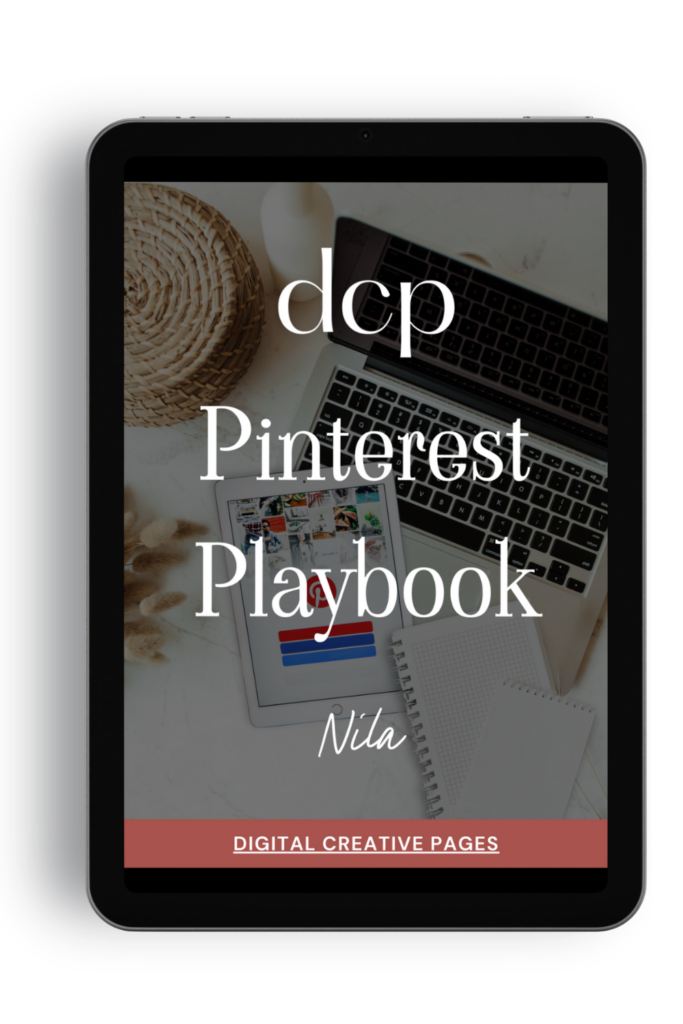
Need a Pinterest strategy that actually works?
The Pinterest Playbook covers everything: how to set up your account, SEO keyword research, algorithm secrets, where to add the keywords, what kind of pins to make.
It’s the complete guide I wish I had when I started. Just 84 pages of what works.
$27 → Get the playbook
Optimizing For Success
1. Keyword Research and Implementation
- Use Pinterest Trends to identify popular search terms
- Monitor seasonal keyword fluctuations
- Create a keyword database for your niche
- Use Google Keyword Planner for additional insights
- Track keyword performance over time
- Implement keywords naturally in all pin elements
2. Multiple Pin Strategy
- Create 3-5 different designs per product
- Test different images, colors, and text overlays
- Vary pin descriptions while maintaining keywords
- Schedule pins at different times
- Use different boards for maximum exposure
- Track which variations perform best
3. Design Testing
- A/B test different pin sizes
- Try various text overlay positions
- Test different color combinations
- Experiment with various font styles
- Track engagement rates for different designs
- Monitor click-through rates for each variation
4. Performance Tracking
- Set up Google Analytics for detailed traffic analysis
- Monitor Pinterest Analytics regularly
- Track conversion rates by pin design
- Analyze best-performing boards
- Monitor seasonal performance trends
- Create monthly performance reports
- Adjust strategy based on data insights
Conclusion
Remember: Success in Pinterest affiliate marketing doesn’t happen overnight. It requires consistent effort, regular monitoring, and ongoing optimization. Start implementing these steps one at a time, and you’ll build a strong foundation for your Pinterest affiliate marketing business.
Ready to take your Pinterest strategy to the next level but don’t have the time?
As an experienced Pinterest manager, I help busy entrepreneurs and content creators grow their traffic and sales through strategic Pinterest marketing. From keyword-optimized pin creation to board management and analytics tracking, I handle the technical details so you can focus on your business.
If you’re ready to transform your Pinterest presence without the overwhelm, let’s chat about how my Pinterest Management Services can work for you. Learn more about my services to get started.
Loved This Post? Save It for Later!
And hey! If this post helped you, don’t forget to pin it to one of your boards so you can revisit it anytime. And more small business owners and creators can discover these helpful tips. Every save and share genuinely supports my work, and I’m grateful for it! Thank you!
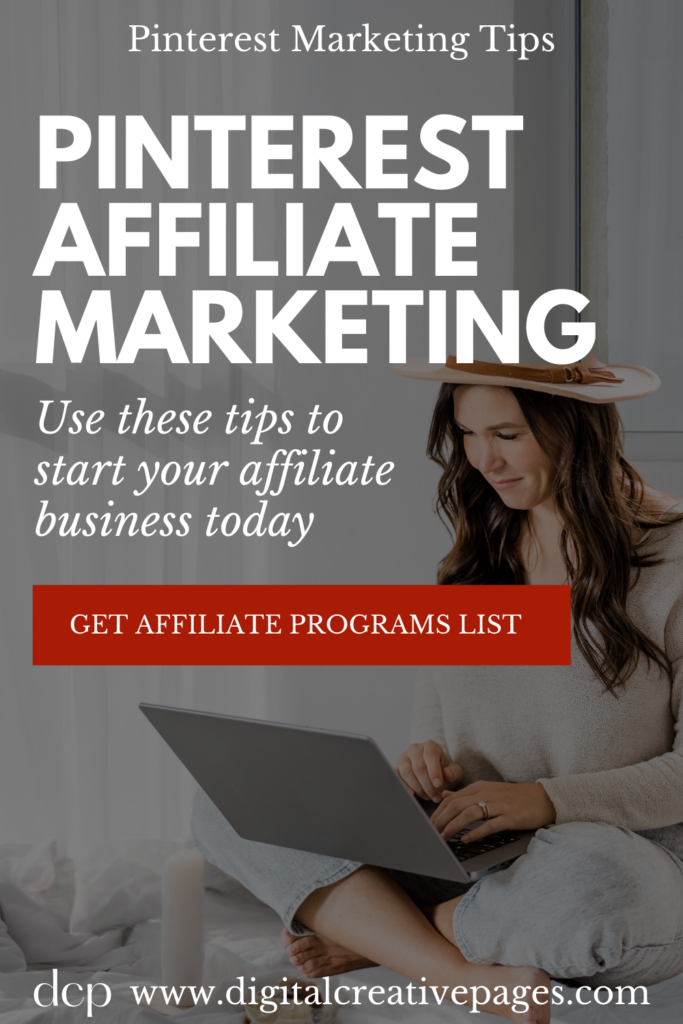
WANT TO MASTER CANVA LIKE A PRO?
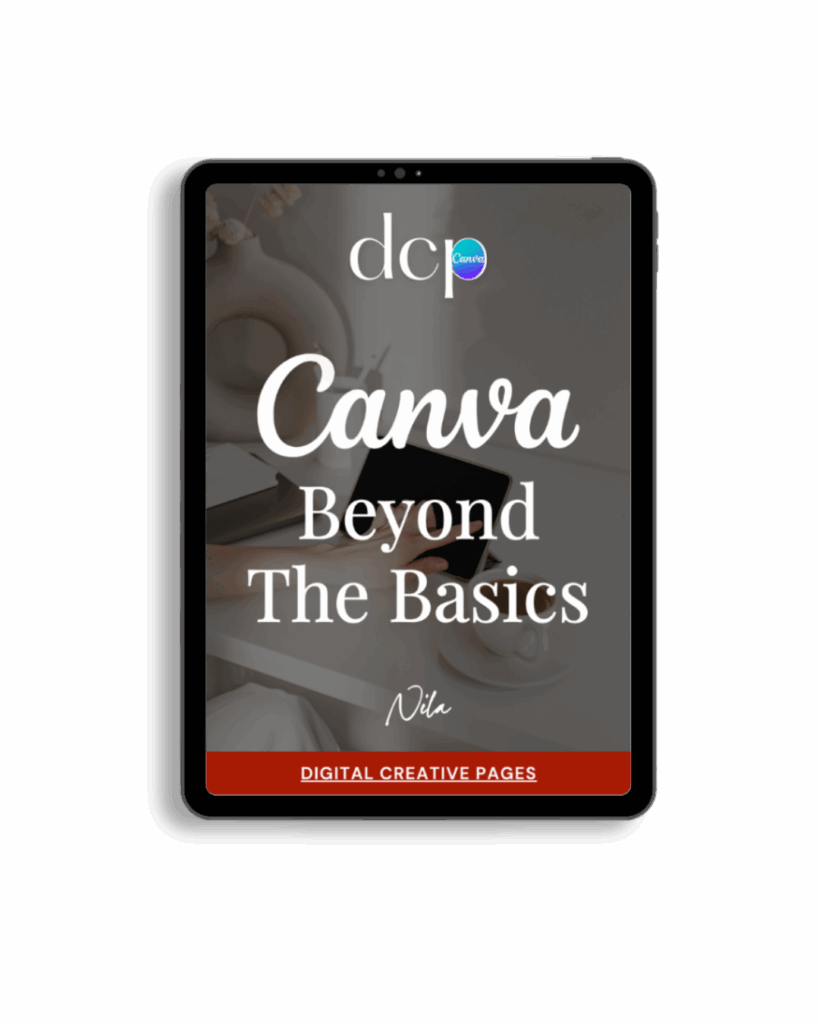
If you’re ready to move beyond basic designs and unlock Canva’s most powerful features, my book Canva – Beyond the Basics is for you.
Learn advanced workflows, time-saving hacks, and features like brand templates that busy entrepreneurs need to create professional content faster. It’s designed for anyone who wants to work smarter, not harder.
TEMPLATES FOR ENTREPRENEURS
No time to design from scratch? My Pinterest Templates are created with strategy, structure, and your brand in mind.
Pick your style: Modern Minimalist | Soft Storytelling | Entrepreneur-Friendly Layouts
For the cost of a latte, get them here → DCP Shop → $5
MY TOP POSTS
My INTRODUCER post – check out why I chose Showit as my website builder here
Use my affiliate code DCP to get one 1.5 months free on Showit
Get all the resources for your online business growth and Pinterest marketing without breaking the bank from my DCP Shop here
FB
X
Pin
Share
By signing up for my freebies, you are agreeing that I can use your email address to market to you. You can unsubscribe from marketing emails at any time by using the link in my emails.
Leave a Reply Cancel reply
Previous Story
next Story
sound like we're a match?
Now I empower women to follow their dreams and make money from home with digital products via social media, mainly Instagram and Pinterest.
I'm a beta reader & editor, who is also a PA to a couple of authors slash best friends.
Hey friend!
Join the membership
For Stock Pics
Styled stock society
Stock photos and brand visuals for women entrepreneurs who are ready to stand out.
Styled Stock Society — with its on-brand and one-of-a-kind stock photos, graphic templates, marketing materials, and more — is designed to elevate your brand in less time.
#affiliatelink
For the Business
showit
Get the 1st month free using the code DCP.
Discover the ultimate platform for effortless page customization! Create or update your site without coding knowledge or hiring a developer. This drag-and-drop tool is user-friendly, versatile, and beautifully designed.
visit site
My for your business
favorite tools
Let's explore it together
Come with me
visit site
flodesk
Free 30-day trial + 50% off!
Elevate your email marketing with Flodesk, a company that simplifies email list growth and streamlines creation. Create stunning emails quickly and effortlessly—join Flodesk now!
DOWNLOAD
Free Guide
FREEBIE FREEBIE FREEBIE
Get the free guide download by over 2,000 people!
Digital Content Pages
subscribe to my newsletter
SIGN ME UP
I only send helpful content and valuable freebies. You can unsubscribe anytime.
Imagine this: You're enjoying your morning routine, cup of coffee in hand, when a fresh set of actionable business and social media marketing insights lands in your inbox.
No overwhelming tactics or pushy sales talk—just thoughtful, sustainable strategies to help your business thrive.
Want to join a growing community of bloggers, business owners, and social media enthusiasts? Sign up for the Digital Content Pages Newsletter and get weekly bite-sized tips and free resources delivered directly to your inbox.
You'll be added to my newsletter
Thanks
© Copyright 2024 - 2025 Digital Creative Pages Business Mentor + Beta Reader + Book Editor
Get my free set of 5 pins download by over 100 people!
Quick + Easy Ways to Start Making Pins
Join Me on Insta
